The Preparer
On the first Friday before the October full moon, for each of her important athletic career years, Natascha Badmann’s husband engaged in a behavior not emulated by any other athlete, or athlete advocate. While all the other athletes were riding or rolling their bikes up to bike check-in the day prior to the Hawaiian Ironman Triathlon, Toni Hasler was carrying her Cheetah, like an expensive crystal vase, thru the circus, depositing it at the bike rack slot for bib number-1.
Toni is not just a husband. He’s a husbander. Today, through his business, he warrants he’ll deliver a professional service as a nutritionist and a coach. But to Natascha he’s been more than that.
Kristin Armstrong started as a triathlete, but ended as the owner of gold medals earned at three consecutive Olympic Games. Her specialty was the time trial. Her secret weapon was Joe Savola, her husband.
“When I first met Kristin she had her own team mechanic,” Savola told me. “It took me until right before Beijing [Olympics, in 2008] before I said, ‘Why am I leaving all this in the hands of someone very competent, but they’re taking care of a dozen or two dozen bikes? Where’s the attention paid to Kristin’s bike?'”
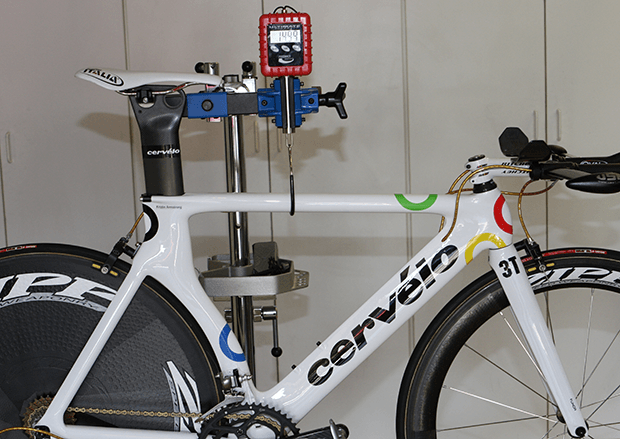
Joe Savola and Toni Hasler may not have set out with this in mind but in the end each became a Preparer.
“We brought that into Beijing [Olympics], especially the TT,” Savola told me. “Kristin and Jim Miller [Kristin Armstrong’s coach] will make sure she’s in the best shape possible. My job is to make sure the bike is the most complete bike possible. I took the active role. We can pay as much attention to these components as we need to. Every major race Kristin showed up to, she never questioned her equipment. Never wondered if she had the lightest bike, the most aero bike. She was always as prepared as she could be.”
• • Preparers make it their jobs to know about all the other things that get athletes to the starting line. They’re avocational bike fitters, mechanics, travel agents, cooks; they’re mini-experts in saddles, aerobars, helmets, apparel, footwear. They know the rules of competition; they understand and construct nutrition plans, and can outfit a bike to execute the plan. • •
Back in 1984, before he invented what became the Speedplay pedal (a company he and his wife Sharon still own and manage), Richard Bryne husbanded Jim Elliott through RAAM. Prior to that he helped get Elliott around the velodrome more than 500 miles in 24 hours, a then world record. Bryne has worked with athletes over the decades on position, technique – famously tutoring GC Grand Tour contenders on how to descend fast – and equipment. He built and assembled the pedals used by Kristin Armstrong during her Olympic runs, along with the pedals used by Jan Frodeno, Sebastian Kienle and others. Bryne believes that the Preparer is a thing. Like nutritionist, or massage therapist or any specialty.
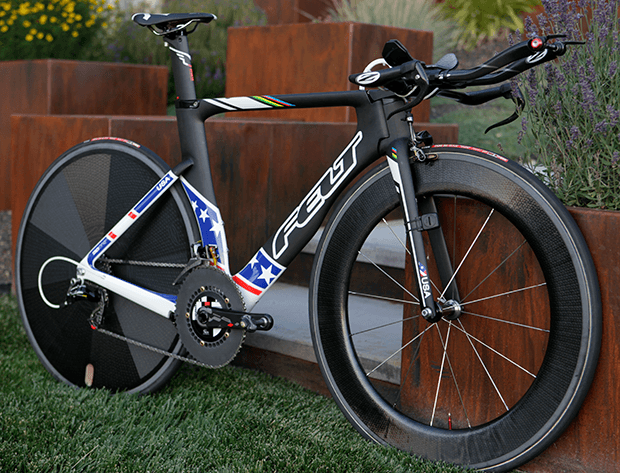
He’s right. There’s no school where you learn to be a Preparer. But there are characteristics. It helps to have been a passable racer yourself. And technically wired. “I ride a fair amount as well,” Savola told me, “and I rode more yet when she transitioned from triathlete to road cyclist,” and added, “I have somewhat of an engineering and mechanical background.” Mostly what you need is an extreme attention to detail.
• • Preparers are schooled just enough in aerodynamics and in rolling resistance; they understand tire and wheel choice. They make sure their athletes know precisely what to do if the athlete has a flat or mechanical; they know in advance that the athlete is capable of quickly fixing a flat; and that the athlete has the requisite strength to deal with a flat tire. • •
How much attention did Savola devote to his wife’s bikes? Here’s how he described it, compared to the typical 18 and 19 pound TT bikes ridden at the highest levels over the last 3 Olympic Games: “All 3 of Kristin’s bikes for the Olympics, Rio and Beijing most similar, were right at weight limit. You know it’s hard to get a 15-pound time trial bike. We’re not going to sacrifice aero at all. But Rio had 1400 or 1500 feet of climbing. We drove the course the day before the race, I knew the pitches, looked at them on Best Bike Split a hundred times. We had the right choice on wheels and tires, the Felt DA frame is phenomenal, especially in a yaw. When we drove the course I couldn’t believe the steepness of the climbs, how scary the descents.
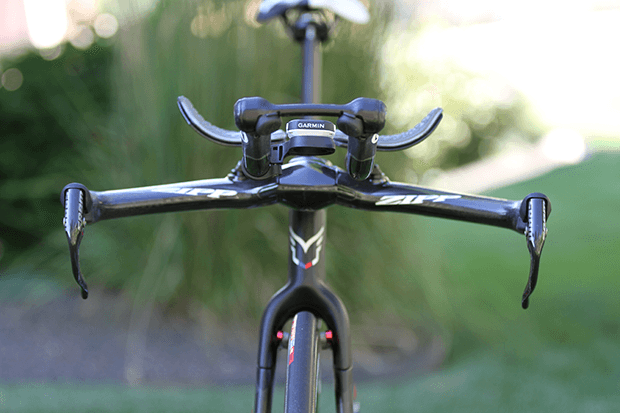
"Beijing was more of an open course, the climb wasn’t as pitchy, but a sustained climb for 20-plus minutes, with Kristin in the small chain ring. When I look at the Rio bike, I had it figured out in position, aerodynamics, but how are we going to take weight out? We had a rear disc, 808 up front, but still we got a sub-16-pound bike, without sacrificing strength or performance."
[Here’s a photo gallery of Savola-finished Felt DA Kristin Armstrong rode in London]
Savola pretty much took everything apart on her bikes, regreased them with very lightweight grease and just the right amount. He took 10 different industry chains apart, tested them all, sent them to Friction Facts, and the 2 fastest chains were on Armstrong’s Rio bikes, after having been put in ultrasonic baths and reassembled.
[Here’s an example of a maker of this very kind of specialty chain.]
Sometimes Savola’s extreme attention to her equipment drove his wife to distraction. “Kristin was not allowed into my bike shop area. ‘Why are you doing that?’ she’d ask. ‘Do you need to do that again?’ Yes. This is my spot. Every little detail.”
Savola extolled the merits of both the Felt and Cervelo bikes Armstrong had to ride throughout her career.
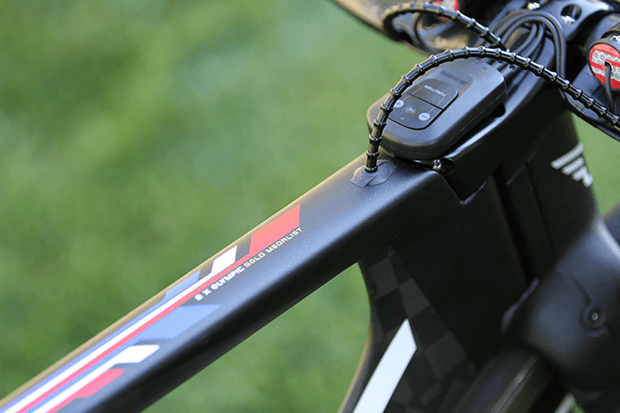
The P3 was, “easy to get to the weight limit. I had it on the scale at 14.99lb [it's on the scale in the image highest above]; the reason it went to 15.25 is because we wanted an 808 in front instead of a 404. It was kind of the hit of Beijing, even among the US athletes.”
Savola-prepared bikes are too much of a hit for some of the competitors. Another athlete spouse privately told Savola, at Rio, “I got my butt chewed, because I didn’t prepare her bike as well as Kristin’s was prepared."
“I saw it in Rio, the tire/wheel combos, the athletes could’ve done a better job,” Savola said. “Every one of these top athletes should have a Preparer – somebody who goes the extra mile, but treats the bike like a child in a way, getting ready to send them out into the world.”
• • Preparers understand rider positions, different hand placements on the handlebars; when to leave the aerobars; the mechanics of how to descend, and how to generate power most efficiently going uphill. • •
I asked him if he could pick a moment where this attention to detail made a demonstrable difference. “Kristin beat Olga [Zabelinskaya] by 4 or 5 seconds in Rio. I’m sure the Russians did a pretty good job. I always felt like what we did was worth 3 to 5 watts."
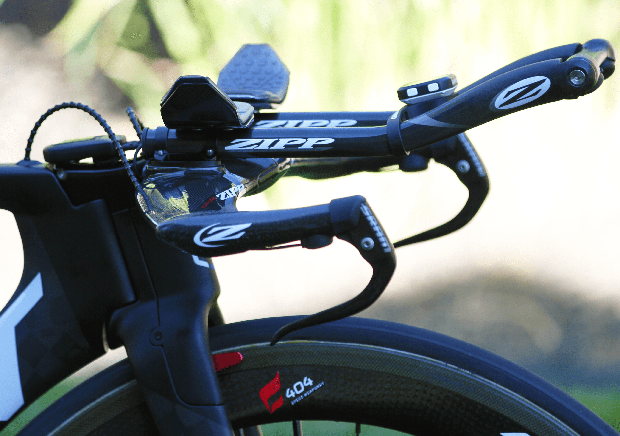
• • Preparers know where you should line up at the start of the swim; who to follow; they know the course and make sure their athletes do. They can prepare their athletes for a possible wrong turn. Preparers and their athletes construct a tactical plan. Preparers know how to satisfy the needs of sponsors and media, the race organization, doping control. • •
“I viewed my role as her personal mechanic to make sure her bike was ready,” Savola told me, “but you mentioned in your previous life there’s a psychological; the mental piece of it; I felt like that was 50 percent of my role.”
Preparers are often forged through their ardent interest in the welfare of a loved one. A parent of an athletic child. Preparers are often the spouses of elite athletes.
Bryne cites among his list of Preparers Michellie Jones. My Preparer list included Michellie’s ex-husband, Pete Coulson. My former wife and I traveled the world circuit for some years, and what spouse-Preparers often cite is the “I’m not racing,” moment. It happened to me in New Zealand, the Wednesday before that country’s famous Ironman, after a 15-hour flight. “I’m not ready; not fit.” It happened to Savola before one of Armstrong’s Olympics. “I’m not racing", Armstrong told her husband. “She was ready to pack it in. ‘I don’t deserve this spot.’ In Rio [Armstrong would] go through those low points, but then pop put of them higher. I should’ve recognized this more, but this is just how she is. In life. How she approaches life. We’re [nowadays] building fitness centers. To see her drive, and attention, it opened my eyes [to how driven she is to prevail in general]."
The Preparer’s job includes smoothing over rough emotional patches pre-race, which can manifest regardless of the athlete's gender, age or ability. My former wife had the worst swim of her career at that Ironman New Zealand race for which she declared herself unready, finishing 11 minutes down on the lead. Then she set a new bike course record, a run course record, won the race by about 20 minutes; and came within 33 seconds of Erin Baker’s overall course record.
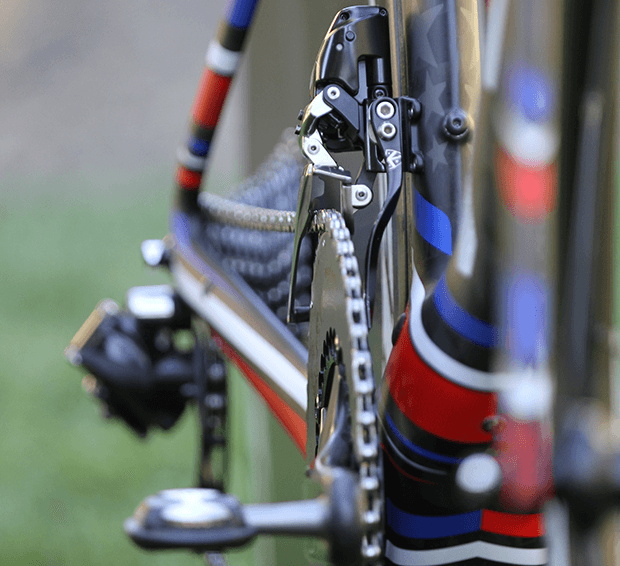
I dedicated myself to becoming a better Preparer after a catastrophic occurrence at a U.S. National Championship aboard a bike my company made. A front wheel unraveled underneath Lance Armstrong as he was on his way to an easy victory at a USTS National Championship in the early 1990s. Never again would I let that happen. For Savola, that moment was at a 2006 World Championship. “Kristin dropped her chain off her Cervelo TT bike up a climb. Kristin’s a spinner, she doesn’t muscle it. She hits a climb she’ll keep her cadence to 92, 93, she shifted down to the small ring, dropped her chain.” Savola’s response? They developed their own chain catcher, turned it into a company. K-Edge became the chain catcher to have, before SRAM developed its own for its own drive trains.
This attention to detail pays. Savola, “Learned a lot about bicycle components. Beijing especially, 3 times [Armstrong] went to the small ring. Jeannie Longo missed the podium by 1sec, 2sec, dropped her chain at the top of the climb. One of those things. Don’t want to take a risk. Kristin never had a flat tire. I was never worried.”
That was my same experience. In all of my former wife’s races, never a flat. But just so, I’d glue the tubular tires on, let them dry, rip the tire off, and reglue it with just enough glue to hold the tire snug, but easy enough for her to rip off if she did flat. Savola glued on all his wife’s tires, and was adamant that they were always Vittoria Crono tubulars, and always used Mastic glue, which was hard to deal with but yielded what he felt was the best rolling resistance.
• • Preparers aren’t necessarily experts in any of these fields. They decipher through intuition what they need to know to service their athletes across most of these specialties. • •
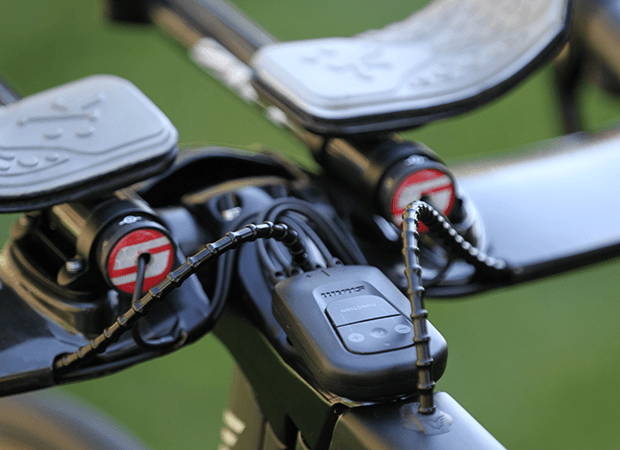
Who does Richard Bryne include among his list of current and past Preparers? “You,” he answered when I asked. “Preparers can identify each other from a mile away,” he said. Expanding on his list, he continued with Joe Savola first, and then, “Jim Manton, Colby Pearce, Gerard Vroomen, John Howard, Jim Martin, Mat Stienmetz, Paul Lew, Mike Burroughs, Chet Kyle, Greg Lemond, Paraic McGlynn, Chris Huber, Anne Barnes, Steve Hed."
Ahh. Steve Hed. Here’s a pair of Steve Hed Preparer stories. It was in the mid-2000s, the Tour de France had that unique TT up Alp d’Huez (you remember it) and Steve was down helping make perfect Lance’s bike for that TT. I hadn't seen Steve in awhile and I wanted to catch up. I drove to Sheryl Crow’s house in the Hollywood Hills. “They’re out there,” she said, with a wave of her arm that took in a valley of 17 million people. So I drove off, looking. And I found them. Parked on the side of Mulholland Drive. Steve was gradually, little by little, almost to the molecule, grinding away at the back of the shorty bar armrest so that Lance would never – but just barely never – bang it with his knee when out of the saddle.
Twelve or fifteen years before that Alp d’Huez TT, in the early 90s, I remember Steve, John Cobb and I, in a rented garage in Kona, applying silicon filler to the tire/wheel transition of every wheel of every elite athlete, so that the transition this transition was seamless and glassine smooth.
My list of Preparers? Polymathic students of technology, technique, mechanics, nutrition, and just overarching curation of another’s race? My adds are Pete Coulson, Paul Thomas, Toni Hasler, Lloyd Thomas, and we all – Bryne, Savola and I – add to this list Jim Felt, of whom Savola said is, “One of the best in the world at understanding the overall picture.”
[PHOTOS: All the photos above belong to Joe Savola. The 1st is of Kristin Armstrong’s Beijing bike. The 2nd is of her London bike. The final 5 are of her Rio bike. She won Olympic Gold Medals in the women’s individual time trial on all 3 bikes.]


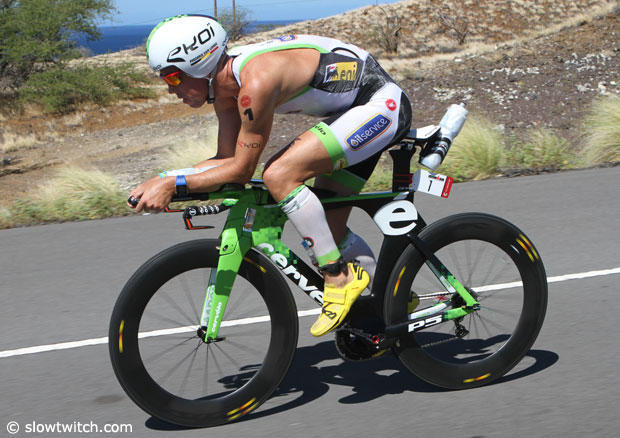
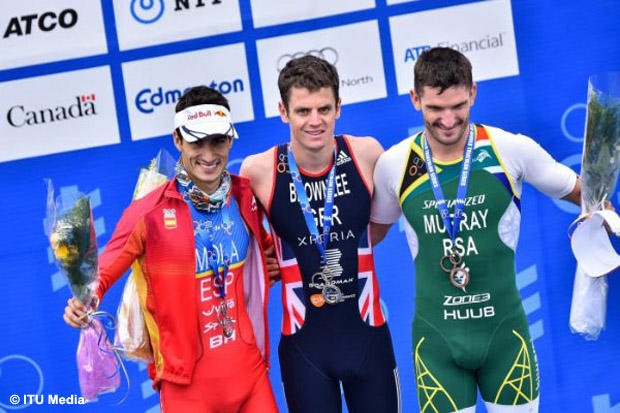
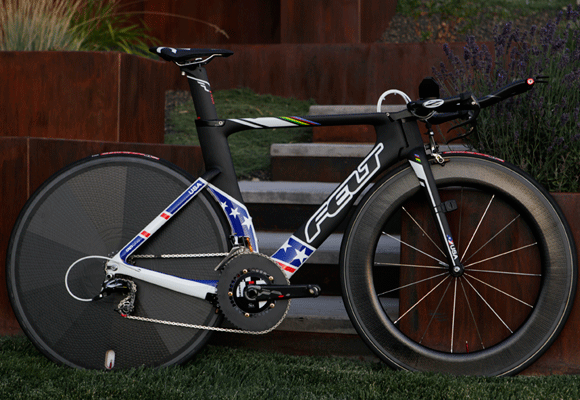
Start the discussion at forum.slowtwitch.com